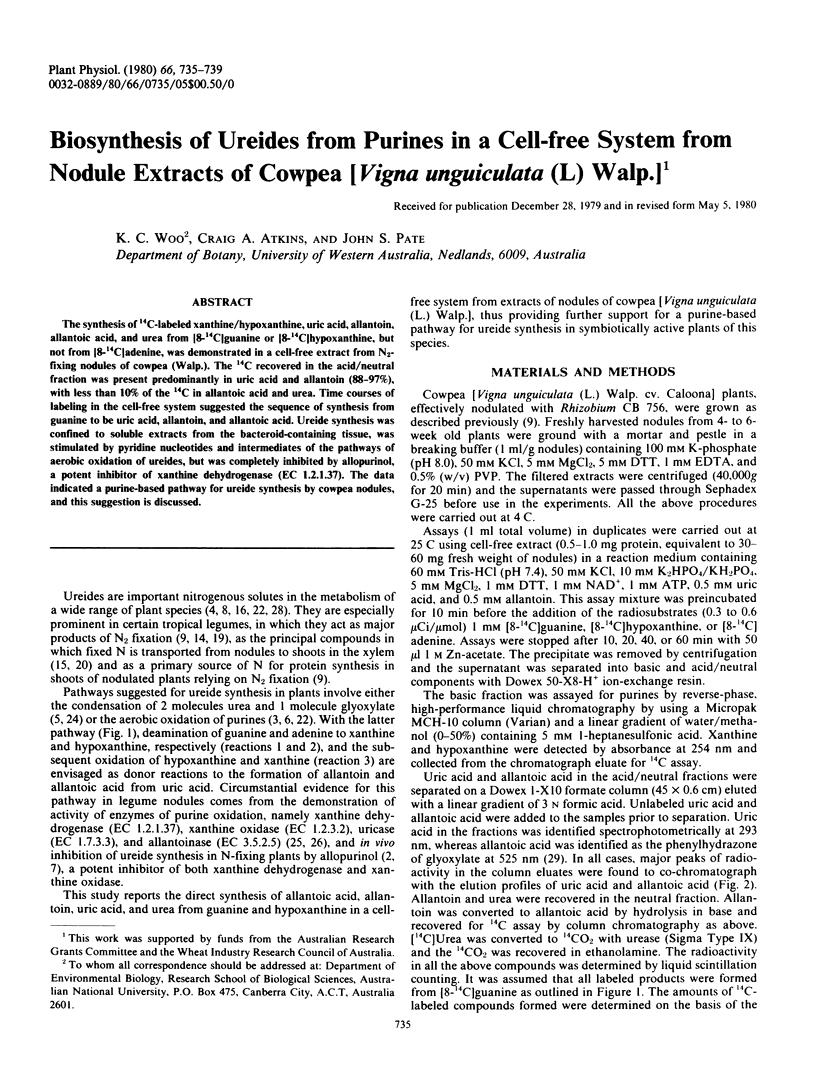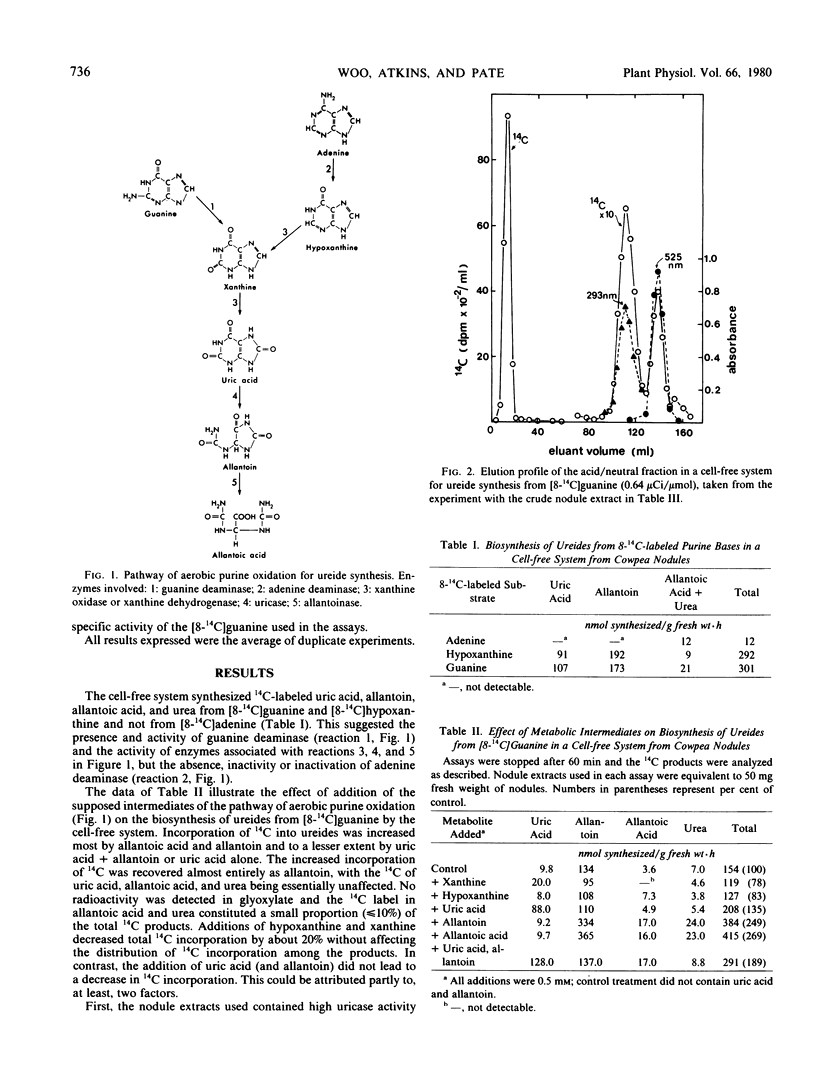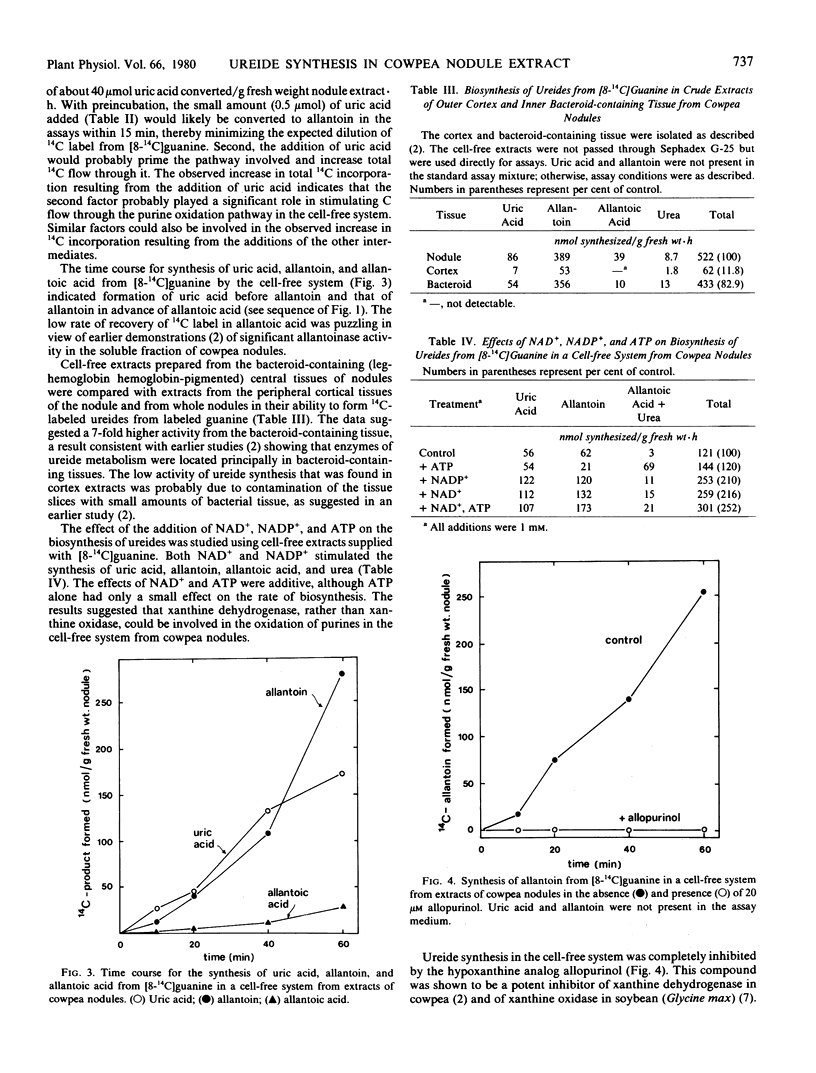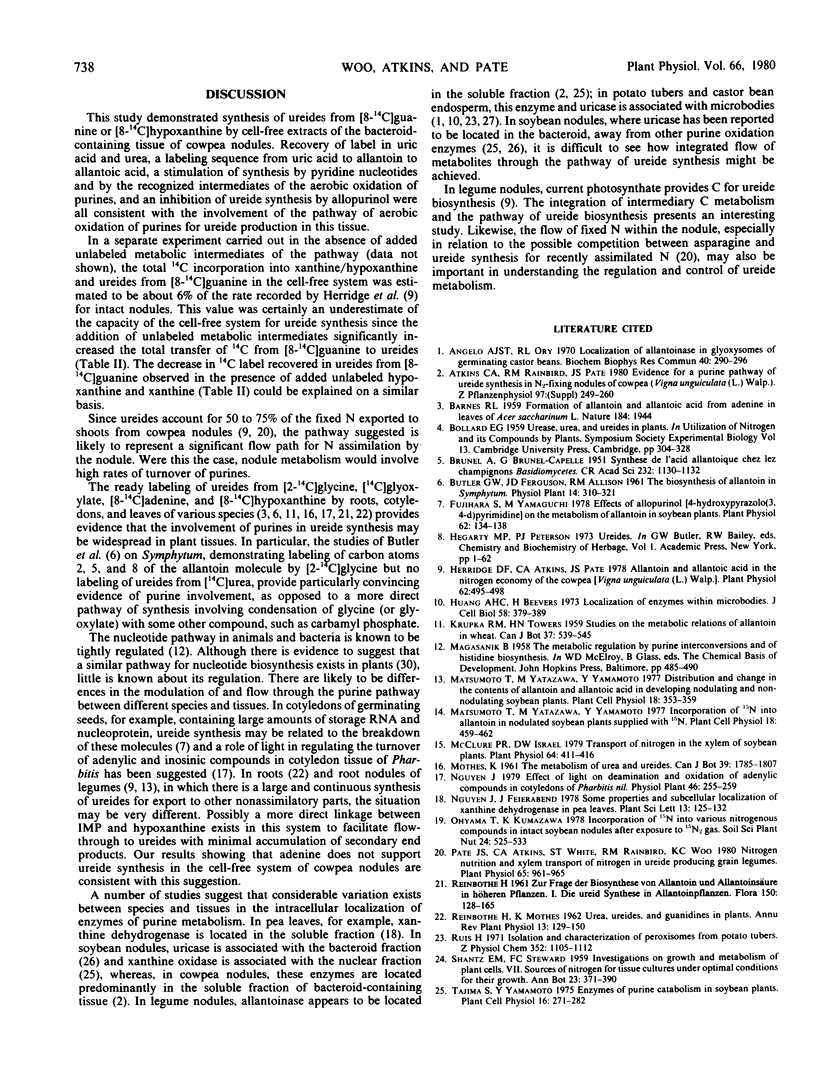Abstract
The synthesis of 14C-labeled xanthine/hypoxanthine, uric acid, allantoin, allantoic acid, and urea from [8-14C]guanine or [8-14C]hypoxanthine, but not from [8-14C]adenine, was demonstrated in a cell-free extract from N2-fixing nodules of cowpea (Walp.). The 14C recovered in the acid/neutral fraction was present predominantly in uric acid and allantoin (88-97%), with less than 10% of the 14C in allantoic acid and urea. Time courses of labeling in the cell-free system suggested the sequence of synthesis from guanine to be uric acid, allantoin, and allantoic acid. Ureide synthesis was confined to soluble extracts from the bacteroid-containing tissue, was stimulated by pyridine nucleotides and intermediates of the pathways of aerobic oxidation of ureides, but was completely inhibited by allopurinol, a potent inhibitor of xanthine dehydrogenase (EC 1.2.1.37). The data indicated a purine-based pathway for ureide synthesis by cowpea nodules, and this suggestion is discussed.
Full text
PDF




Selected References
These references are in PubMed. This may not be the complete list of references from this article.
- Fujihara S., Yamaguchi M. Effects of Allopurinol [4-Hydroxypyrazolo(3,4-d)Pyrimidine] on the Metabolism of Allantoin in Soybean Plants. Plant Physiol. 1978 Jul;62(1):134–138. doi: 10.1104/pp.62.1.134. [DOI] [PMC free article] [PubMed] [Google Scholar]
- Herridge D. F., Atkins C. A., Pate J. S., Rainbird R. M. Allantoin and Allantoic Acid in the Nitrogen Economy of the Cowpea (Vigna unguiculata [L.] Walp.). Plant Physiol. 1978 Oct;62(4):495–498. doi: 10.1104/pp.62.4.495. [DOI] [PMC free article] [PubMed] [Google Scholar]
- Huang A. H., Beevers H. Localization of enzymes within microbodies. J Cell Biol. 1973 Aug;58(2):379–389. doi: 10.1083/jcb.58.2.379. [DOI] [PMC free article] [PubMed] [Google Scholar]
- McClure P. R., Israel D. W. Transport of nitrogen in the xylem of soybean plants. Plant Physiol. 1979 Sep;64(3):411–416. doi: 10.1104/pp.64.3.411. [DOI] [PMC free article] [PubMed] [Google Scholar]
- OKI Y. Pathophysiological effects of circulating ferritin. Nature. 1959 Dec 19;184(Suppl 25):1944–1945. doi: 10.1038/1841944b0. [DOI] [PubMed] [Google Scholar]
- Pate J. S., Atkins C. A., White S. T., Rainbird R. M., Woo K. C. Nitrogen Nutrition and Xylem Transport of Nitrogen in Ureide-producing Grain Legumes. Plant Physiol. 1980 May;65(5):961–965. doi: 10.1104/pp.65.5.961. [DOI] [PMC free article] [PubMed] [Google Scholar]
- Ruis H. Isolation and characterization of peroxisomes from potato tubers. Hoppe Seylers Z Physiol Chem. 1971 Aug;352(8):1105–1112. doi: 10.1515/bchm2.1971.352.2.1105. [DOI] [PubMed] [Google Scholar]
- St Angelo A. J., Ory R. L. Localization of allantoinase in glyoxysomes of germinating castor beans. Biochem Biophys Res Commun. 1970 Jul 27;40(2):290–296. doi: 10.1016/0006-291x(70)91008-9. [DOI] [PubMed] [Google Scholar]
- Theimer R. R., Beevers H. Uricase and allantoinase in glyoxysomes. Plant Physiol. 1971 Feb;47(2):246–251. doi: 10.1104/pp.47.2.246. [DOI] [PMC free article] [PubMed] [Google Scholar]
- Trijbels F., Vogels G. D. Degradation of allantoin by Pseudomonas acidovorans. Biochim Biophys Acta. 1966 Feb 14;113(2):292–301. doi: 10.1016/s0926-6593(66)80068-1. [DOI] [PubMed] [Google Scholar]


